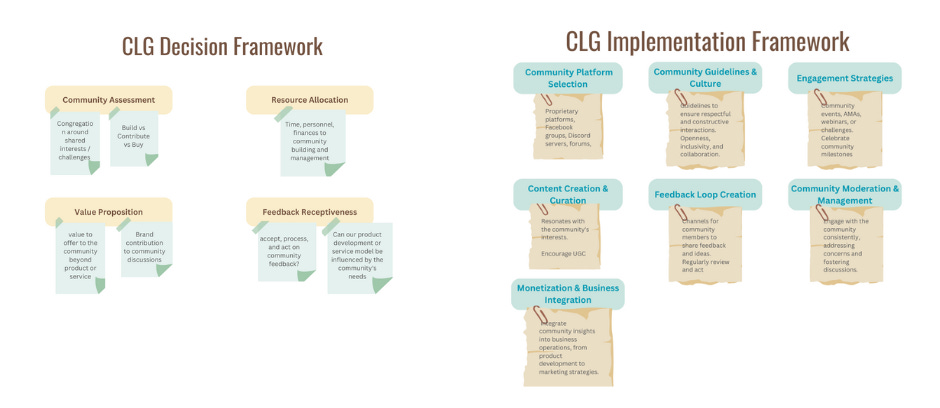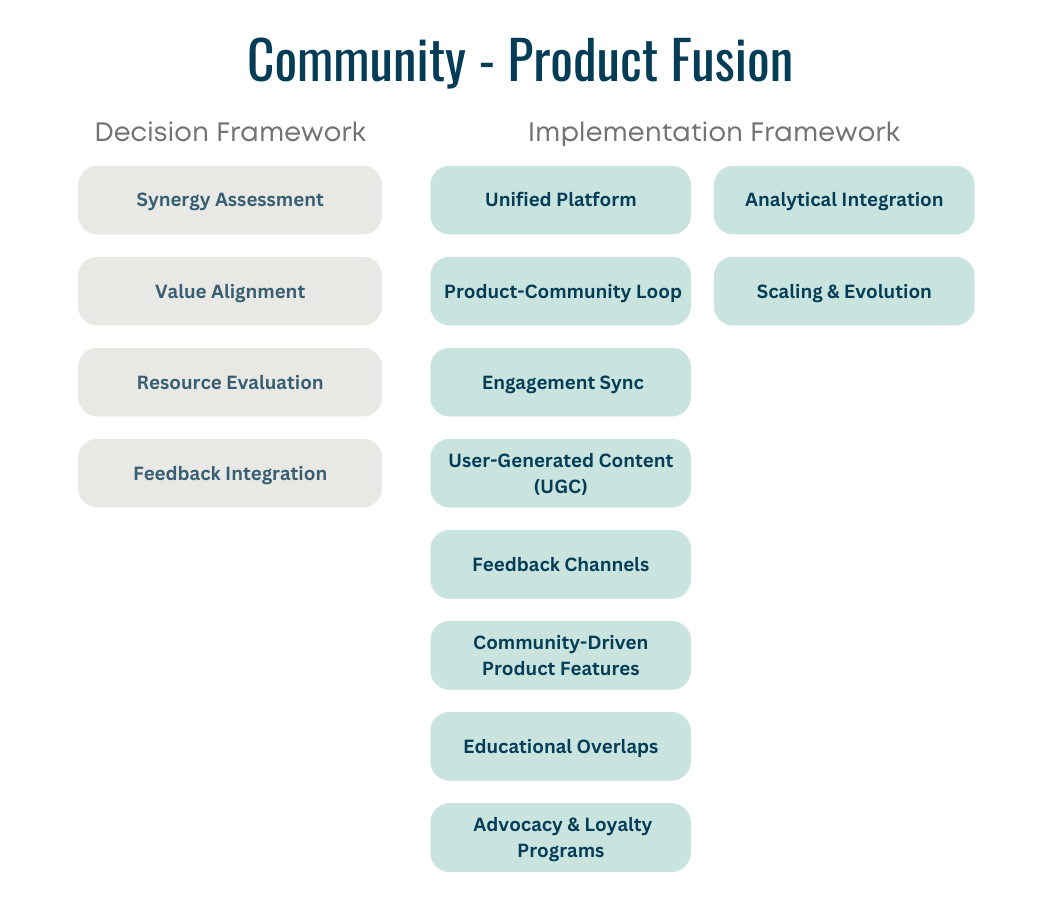Blending Community Passion with Product Obsession for Growth - Merging CLG with PLG
Community-Led Growth (CLG) with Product-Led Growth (PLG) can unlock unprecedented growth dynamics for startups. But how do you effectively intertwine community passion with product functionality?
👋 Hey, Ayush here! Welcome to this week’s ✨ free edition ✨ of Startup GTM Newsletter. Daily, I work with founders and understand their questions about GTM, growth, people-first strategies, communities and anything else about building a startup.
If you’re not a subscriber or have joined recently, here’s what you missed:
Seeding and Monetising Communities? -Playbook from Pioneers on turning communities to businesses
An In-Depth Look at The Integration of PLG Motion Across Marketing Channels
Subscribe to get access to these posts, and every post. Follow me on Linkedin and Twitter. Want to discuss about your GTM? Setup a meeting on this link.
Product-led growth (PLG) and Community-led growth (CLG) are distinct go-to-market strategies that harness different means for customer acquisition and retention. PLG leans on the product itself, like in the case of Slack, which offers a freemium version to let users experience its value and then upgrade. In contrast, community-led growth champions a tight-knit, active community around a product or brand.
An increasingly popular subset of community-led growth involves theme-based communities, where brands curate spaces around specific interests or challenges, thereby attracting potential customers. For instance, Sephora, the beauty retail brand, created BeautyTalk, a community where makeup enthusiasts discuss products, share reviews, and offer beauty advice. Such theme-based communities not only draw users through shared interests but also organically place the brand at the center of discussions, fostering loyalty and encouraging product exploration.
Product-led Growth
PLG Case Study - Razorpay
Razorpay, an Indian fintech startup, provides a compelling example of successful Product-Led Growth (PLG) implementation. Founded in 2014, it aimed to simplify the online payments process for Indian businesses.
PLG Decision Framework:
1. Product-Market Fit: Recognizing the fragmented and cumbersome payment gateway landscape in India, Razorpay designed a seamless solution that integrated multiple payment methods.
2. Target Audience: They focused on the burgeoning e-commerce sector, startups, and SMEs, which were underserved by traditional banking gateways.
3. Competitive Analysis: While global players like PayPal were present, they didn't cater to the specific needs and nuances of the Indian market, giving Razorpay a differentiation edge.
4. Internal Readiness: Razorpay continually innovated, ensuring their product suite evolved based on market feedback.
PLG Implementation Framework:
1. Product Experience: They emphasized a smooth onboarding experience, enabling businesses to start accepting payments with minimal setup time.
2. Freemium or Trial Model: Razorpay introduced competitive pricing and transparent structures, which were attractive to startups and SMEs.
3. Viral Mechanisms: The ease of integration and robust support led to strong word-of-mouth referrals.
4. Educational Content: They provided extensive documentation, helping businesses integrate and understand the platform.
5. Community Engagement: Razorpay actively engaged with the startup community through webinars, workshops, and partnerships.
6. Data Analytics: They used data to understand transaction failures, optimize payment success rates, and enhance customer experience.
7. Cross-Functional Collaboration: Razorpay maintained synergy between its product, sales, and support teams, ensuring a consistent and user-centric approach.
Community-led Growth
CLG Case Study - Cure.fit
Cure.fit, a health and fitness startup based in India, provides a compelling example of Community-Led Growth (CLG) success. Founded in 2016, its holistic approach to health and wellness made it a standout in the market.
Decision Framework:
1. Community Assessment: Cure.fit identified that health and fitness enthusiasts often seek community support for motivation, knowledge, and shared experiences.
2. Resource Allocation: They invested heavily in content, offline centers (Cult.fit), and community-driven challenges.
3. Value Proposition: Beyond just fitness sessions, they offered holistic health solutions, including nutrition (Eat.fit), mental wellness (Mind.fit), and more.
4. Feedback Receptiveness: Cure.fit made it a point to incorporate feedback, regularly updating its class formats, diet plans, and even launching new modules.
Implementation Framework:
1. Community Platform Selection: They built a robust app platform where users could not only attend fitness sessions but also participate in community challenges and discussions. Also run a whatsapp community groups for localised chapters.
2. Community Guidelines & Culture: Cure.fit established a positive and motivational tone, where success stories were celebrated, and members were encouraged to support one another.
3. Engagement Strategies: They introduced leaderboard challenges, community events, and rewards for consistent performers, driving engagement.
4. Content Creation & Curation: From diet recipes to workout tutorials, Cure.fit continually produced content that resonated with its community's goals.
5. Feedback Loop Creation: User feedback was regularly sourced through the app, leading to new workout formats, dietary plans, and even the introduction of new verticals.
6. Community Moderation & Management: Dedicated community managers ensured that user queries were addressed promptly, and positive community interactions were fostered.
7. Monetization & Business Integration: Community insights were used to introduce new offerings, from merchandise to health foods, turning engagement into revenue.
8. Growth & Scaling: Cure.fit expanded its offline centers across India, feeding the online community's growth and vice versa.
Leveraging the power of community, Cure.fit has not only retained its user base but also transformed them into brand ambassadors, showcasing the power of Community-Led Growth.
Community-led Growth <> Product-led Growth
CLG <> PLG Case Study - Postman
Postman, an Indian SaaS startup that offers a collaboration platform for API development, exemplifies the successful fusion of Community-Led Growth (CLG) with Product-Led Growth (PLG).
Decision Framework:
1. Synergy Assessment: Postman realized early that API development was not a solitary task. Developers needed a platform to share, test, and collaborate on APIs, making it a natural fit for community interactions.
2. Value Alignment: They ensured their product provided collaborative features, making API sharing and testing easier, while the community offered resources, templates, and solutions.
3. Resource Evaluation: Postman committed resources to both its product development and community nurturing, realizing the intrinsic link between the two.
4. Feedback Integration: Recognizing the tech-savvy nature of its users, Postman harnessed their insights for continuous product enhancements.
Implementation Framework:
1. Unified Platform: Postman's platform not only allows for API testing but also includes spaces for team collaboration and public API documentation.
2. Product-Community Loop: They introduced "Postman Collections," allowing users to share sets of APIs with the community, thus intertwining product usage with community engagement.
3. Engagement Sync: Regular challenges and hackathons were hosted, promoting both community interaction and in-depth product usage.
4. User-Generated Content (UGC): The Postman community actively creates and shares templates, aiding both novices and experts in API development.
5. Feedback Channels: A transparent system for feature requests and bug reports was established, with many community-suggested features being rolled out in subsequent updates.
6. Community-Driven Product Features: Features like "Postman Teams" were developed, acknowledging the collaborative nature of modern API development.
7. Educational Overlaps: Postman University was initiated, offering courses and resources that benefit both community members and product users.
8. Advocacy & Loyalty Programs: Community leaders and active contributors were recognized and rewarded, turning them into brand ambassadors.
9. Analytical Integration: Data from product usage and community interactions were used to drive feature rollouts and community initiatives.
10. Scaling & Evolution: As Postman grew globally, they ensured the harmonious scaling of both the product and community, each feeding the growth of the other.
By fusing CLG and PLG, Postman didn't just create a product; they fostered a vibrant ecosystem that continually drives their growth and innovation.
CLG <> PLG Fusion Quadrant / Decision Matrix
A quadrant framework is a great way to visually categorize the blending of Product-led growth and Community-led growth strategies based on two axes. In this context, one axis can represent the degree of Community-Led Growth (CLG) implementation, while the other axis represents the degree of Product-Led Growth (PLG) implementation.
Quadrant I (Top-Right): High CLG & High PLG
Fusion Strategy: Both community and product are equally prioritized. Companies here fully integrate community feedback into their product evolution, while also driving product users into their communities.
Example Strategy: Host product-related challenges within the community, incorporate community-driven features, and offer community-exclusive product perks.
Quadrant II (Top-Left): High CLG & Low PLG
Community-First Strategy: Companies heavily prioritize community building but may have a less defined or mature product. The focus is on community engagement, support, and resources, with the product taking a secondary role.
Example Strategy: Offer extensive community resources, discussions, and events, with the product being supplementary or evolving based on community direction.
Quadrant III (Bottom-Left): Low CLG & Low PLG
Exploratory Strategy: Companies here are still finding their footing in both community and product strategies. They may be in early stages or pivoting their approach.
Example Strategy: Conduct market research, pilot both community events and product features, and be open to strategic pivots based on feedback.
Quadrant IV (Bottom-Right): Low CLG & High PLG
Product-First Strategy: Companies here have a strong product foundation, with the community taking a backseat. Their growth is driven by the product's value proposition, with the community being an optional or later-stage consideration.
Example Strategy: Prioritize product development and feature launches, with occasional community outreach through webinars or feedback sessions.
Using this framework, startups can understand different paths taken by their peers and decide how they want to blend CLG and PLG strategies.
Ready to supercharge your startup's go-to-market strategy? Subscribe to our newsletter for exclusive insights, tips, and expert advice. Plus, schedule a 1:1 GTM brainstorming meeting with Ayush through Calendly link!












